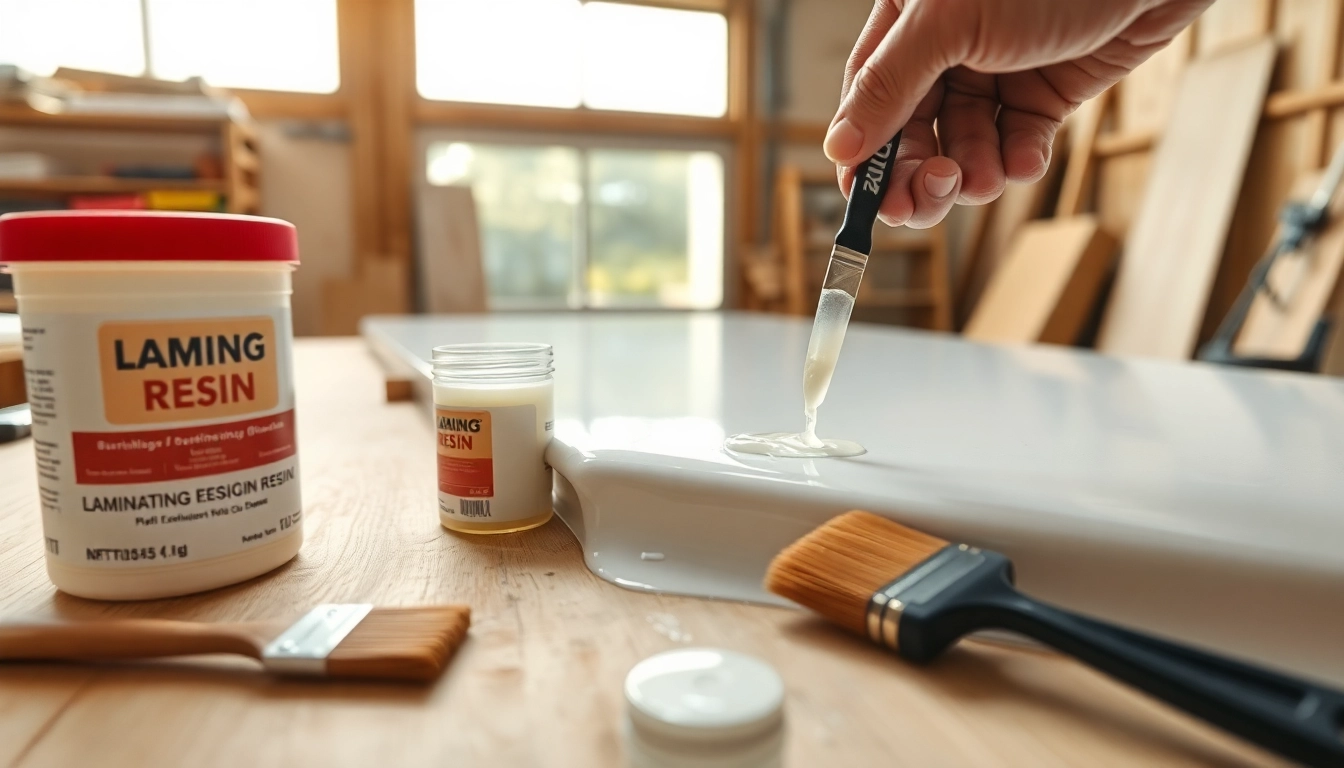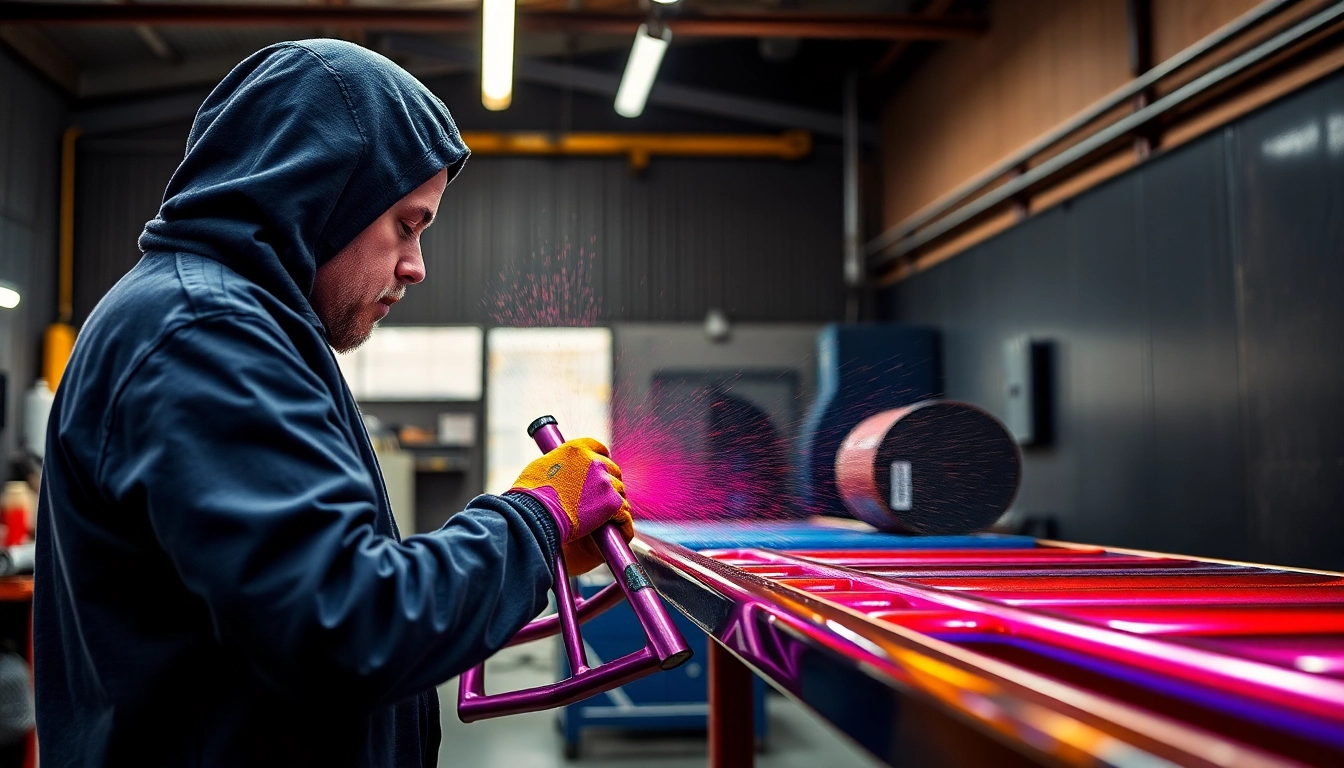Understanding Laminating Resin
Laminating resin is a type of resin used extensively in various industries for reinforcing materials, particularly in composite manufacturing. It acts as a binding agent that saturates the reinforcing materials like fiberglass or carbon fiber, forming a robust composite structure once cured. This process is crucial for producing lightweight yet high-strength materials suitable for numerous applications, from marine construction to industrial design. By thoroughly understanding laminating resin, its properties, and its applications, you can optimize your projects and improve their overall performance and longevity.
What is Laminating Resin?
Laminating resin is primarily composed of a polymer matrix that hardens when combined with a curing agent. This resin is available in two major types: epoxy resin and polyester resin. Each type has distinct characteristics that make it suitable for specific applications.
Epoxy laminating resin is known for its superior adhesion and chemical resistance, making it ideal for applications requiring high strength and durability. On the other hand, polyester laminating resin is favored for its ease of use, quicker curing times, and cost-effectiveness, especially in mass production.
Types of Laminating Resin
Understanding the different types of laminating resin is vital for selecting the right one for your project:
- Epoxy Laminating Resin: This resin offers excellent bonding properties and is resistant to weather, chemicals, and heat, which makes it ideal for demanding applications.
- Polyester Laminating Resin: Commonly used for boat manufacturing, this resin is less expensive than epoxy and cures relatively quickly, but it may not provide the same level of durability.
- Vinyl Ester Laminating Resin: Combining the benefits of epoxy and polyester, vinyl ester resin offers improved toughness and resistance to chemical corrosion, making it an excellent choice for corrosion-resistant applications.
Key Advantages of Using Laminating Resin
Utilizing laminating resin in your projects comes with several benefits:
- Strength and Durability: Laminating resin forms a solid bond with reinforcing materials, creating composites that are strong and durable.
- Lightweight: Materials made with laminating resin are often lighter than traditional materials without sacrificing strength, making them suitable for applications such as aviation and automotive components.
- Versatility: Laminating resin can be used across various industries, including marine, construction, and craft, to meet different project needs.
- Resistance: Depending on the type, laminated composites can be resistant to moisture, chemicals, UV rays, and other environmental factors.
Applications of Laminating Resin
Laminating resin is utilized across a wide range of applications, reflecting its versatility and effectiveness. Here are some of the most common sectors and usages:
Marine and Boating Uses
In the marine industry, laminating resin is a cornerstone for the construction and repair of boats and yachts. Its ability to bond fiberglass to various surfaces ensures sturdy and waterproof vessels that can withstand harsh marine environments. Common applications include:
- Hull Construction: Laminating resin is used to construct the hulls of boats, often in layers that contribute to structural integrity and resistance to water penetration.
- Repairing Damaged Areas: Laminating resin is perfect for patching up minor damages, ensuring that repairs maintain the original strength and waterproof characteristics.
- Boat Accessories: Many boat accessories, like custom molds and fittings, utilize laminating resin for lightweight yet durable structures.
Construction and Repair Applications
In construction, laminating resin is invaluable for creating composite materials used in structural reinforcements, flooring, and paneling. Its strength allows builders to use lightweight materials without compromising on durability. Applications include:
- Reinforced Structures: Laminating resin is often used to strengthen concrete and other structural elements, enhancing their load-bearing capabilities.
- Custom Fixes: It enables quick repairs and reinforcements in various structures, ensuring longevity and safety.
- Insulation and Soundproofing: Its properties allow for effective insulation against moisture and sound, adding value to construction projects.
Art and Craft Projects
For artists and crafters, laminating resin serves as a medium for creative expression. It encapsulates objects, creates stunning visual effects, and forms unique art pieces. The primary uses in this sector include:
- Casting: Artists frequently use laminating resin to cast items, preserving objects within it to create beautiful keepsakes or functional items.
- Coating: A common use is to coat surfaces to provide a glossy finish and added protection to artwork, wood, and furniture.
- Jewelry Making: Laminating resin is popular in the crafting of custom jewelry, allowing for creative designs and incorporation of various materials.
Best Practices for Laminating Resin Application
To achieve the best results with laminating resin, it’s essential to follow best practices tailored to its application. Here are some guidelines to navigate through the application process:
Surface Preparation Techniques
Proper surface preparation is crucial for ensuring optimal adhesion and performance of the laminating resin. Consider the following steps:
- Cleaning: Ensure the surface is free of dust, grease, and contaminants. Use solvents or cleaning agents designated for the specific material.
- Sanding: Lightly sand the surface to create a profile that helps the resin adhere better. Remove any sanding dust afterward.
- Priming: Depending on the material, applying a primer can enhance the bond between the resin and the substrate.
Mixing and Curing Guidelines
Correctly mixing and curing the resin can significantly impact its performance and longevity. When working with laminating resin, keep the following in mind:
- Mix Ratios: Follow the manufacturer’s instructions for mixing ratios of resin and hardener to ensure thorough curing.
- Mixing Technique: Mix thoroughly but gently to avoid introducing air bubbles, which can compromise the integrity of the final product.
- Curing Conditions: Ensure the environment is within recommended temperature and humidity ranges to facilitate optimal curing.
Tips for Achieving Optimal Results
Enhancing your application of laminating resin can yield better quality output. Consider these tips:
- Multiple Layers: For added strength and protection, consider applying multiple layers of laminating resin, allowing each layer to cure thoroughly before applying the next.
- Use of Fiberglass: Incorporate fiberglass cloth or other reinforcing materials within the resin to enhance strength and rigidity.
- Regular Monitoring: Keep an eye on temperature and humidity, as fluctuations can affect the curing process and the final quality of the application.
Common Challenges and Solutions
While working with laminating resin can yield fantastic results, certain challenges may arise. Here are common issues and effective solutions:
Dealing with Bubbles and Surface Imperfections
Air bubbles often form during the mixing process or when pouring the resin. Here are steps to manage this:
- Bubble Removal: Use a heat gun or torch to gently pass over the surface after pouring, as heat can cause bubbles to rise and pop.
- Vacuum Bagging: For larger applications, consider vacuum bagging to eliminate bubbles before the curing process.
Managing Curing Time and Conditions
Curing times can be affected by ambient conditions and material specifics, potentially leading to improper curing. Strategies to overcome this include:
- Temperature Control: Maintain a consistent temperature in the workspace to allow for predictable curing times.
- Use of Accelerators: If necessary, utilize curing accelerators to shorten curing times under particular conditions.
Tips for Safe Handling and Disposal
Safety is paramount when dealing with laminating resin, especially the chemical components involved. Best practices for safe handling include:
- Protective Equipment: Always wear gloves, goggles, and protective clothing when handling laminating resin to avoid skin and eye irritation.
- Proper Ventilation: Work in a well-ventilated area or use respirators to avoid inhaling fumes during mixing and application.
- Disposal: Dispose of resin waste according to local regulations, ensuring environmentally friendly practices are followed.
Comparing Laminating Resin with Other Resins
Understanding how laminating resin compares with other types of resin can help users make informed decisions based on project needs. The most common comparisons include:
Laminating Resin vs. Epoxy Resin
Both laminating resin and epoxy resin provide strong adhesion and durability. However, laminating resin is often less expensive and cures faster, while epoxy is noted for its superior bonding and chemical resistance. Epoxy may be the preferred choice for critical structural applications, while laminating resin suits more cost-sensitive or less demanding projects.
Laminating Resin vs. Polyester Resin
Polyester resin is a specific type of laminating resin. While polyester is lightweight and cures quickly, laminating resin generally provides better performance in terms of adhesion, chemical resistance, and overall structural integrity. The choice often depends on the specific requirements of the project.
When to Choose Laminating Resin Over Alternatives
Choosing laminating resin over other alternatives is often dictated by project specifics. If requiring lightweight and cost-effective solutions for less critical applications, laminating resin is an ideal choice. Conversely, if the project demands high strength and chemical resistance, selecting a different type of resin such as epoxy might be more beneficial.


